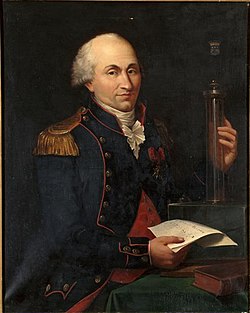James Watt: Difference between revisions
No edit summary |
|||
| Line 14: | Line 14: | ||
Watt spent two years creating a new design and several more improving on the Newcomen steam engine, eventually acquiring a patent in 1769. Capital from John Roebuck and Matthew Boulton finally led to the manufacture of Watt's steam engine in 1776, 11 years after he first created his new design. In 1781, Watt made his next landmark improvement to the steam engine, creating an engine with a rotary output through the invention of the planetary gear. Other improvements, like the throttling valve and the engine governor, finally allowed steam engines, previously confined to mining, to be used to supply power to manufacturing industries as well as to canals and waterworks. By his retirement in 1800, Bolton and Watt had became the most important engineering firm in the country. | Watt spent two years creating a new design and several more improving on the Newcomen steam engine, eventually acquiring a patent in 1769. Capital from John Roebuck and Matthew Boulton finally led to the manufacture of Watt's steam engine in 1776, 11 years after he first created his new design. In 1781, Watt made his next landmark improvement to the steam engine, creating an engine with a rotary output through the invention of the planetary gear. Other improvements, like the throttling valve and the engine governor, finally allowed steam engines, previously confined to mining, to be used to supply power to manufacturing industries as well as to canals and waterworks. By his retirement in 1800, Bolton and Watt had became the most important engineering firm in the country. | ||
==Industrial Contributions== | ==Industrial Contributions== | ||
Revision as of 02:52, 3 December 2015
Page under construction - Joseph Clark (jclark302)
James Watt (1736-1819) was an inventor, mechanical engineer, and chemist best known for his improvements to the steam engine, which spurred the Industrial Revolution in Europe and the United States, as well as for his creation of the term "horsepower." The SI unit for power, the Watt, is named after James Watt in recognition of his contributions to the concept of power and how it is used today.

Personal Life
Early Life
Watt's father owned a prosperous shipbuilding business in Scotland. As a young teen, Watt worked with a wide variety of instruments and knew that he wanted to become an instrument maker (in modern terms, an engineer). After a large portion of his father's investments failed, Watt traveled to London to apprentice with a renowned instrument maker, John Morgan. After completing his apprenticeship, Watt was offered work at the University of Glasgow.
Career and Later Life
In 1763, Watt was given the task of repairing a malfunctioning steam engine by a professor at the University of Glasgow. While Watt found the flaw in the model engine, he realized that the current design, the Newcomen engine, which had remained largely unchanged for nearly 50 years, was hopelessly inefficient due to massive amounts of energy wasted. The current design, he demonstrated, converted nearly three-quarters of its energy to thermal energy, rather than mechanical energy.
Watt spent two years creating a new design and several more improving on the Newcomen steam engine, eventually acquiring a patent in 1769. Capital from John Roebuck and Matthew Boulton finally led to the manufacture of Watt's steam engine in 1776, 11 years after he first created his new design. In 1781, Watt made his next landmark improvement to the steam engine, creating an engine with a rotary output through the invention of the planetary gear. Other improvements, like the throttling valve and the engine governor, finally allowed steam engines, previously confined to mining, to be used to supply power to manufacturing industries as well as to canals and waterworks. By his retirement in 1800, Bolton and Watt had became the most important engineering firm in the country.
Industrial Contributions
Scientific Contributions
Coulomb’s Law
Interesting Facts
See also
References
http://www.egr.msu.edu/~lira/supp/steam/wattbio.html
http://www.britannica.com/biography/James-Watt